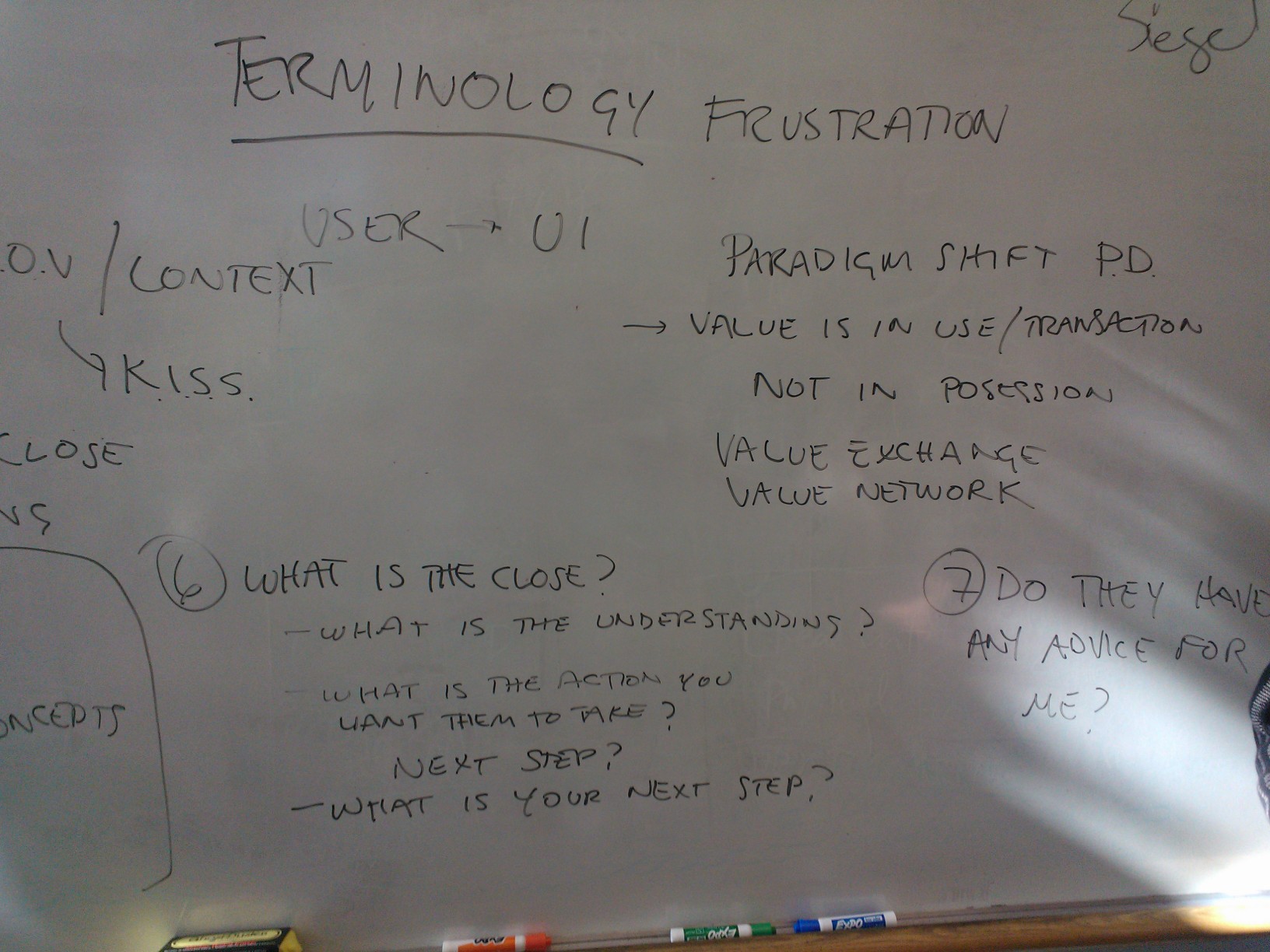‘Group Therapy’ Being a Pioneer and Communicating You Vision to Stakeholders
Session Topic: Group Therapy Thursday 5H
Convener: Peter Stephen
Notes-taker(s): Sid Sidner
Tags for the session - technology discussed/ideas considered: Personal Data Stores, VRM, Salesmanship
Discussion notes, key understandings, outstanding questions, observations, and, if appropriate to this discussion: action items, next steps:
Sid Notes:
How to talk to people about the positive aspects of personal data store?
One approach:
1. Listen first to find another current starting point
2. Ask a question.
3. Map to identity/PDS world view
4. Add in new information
5. Don’t sell through the close. (What is the “close”? What do you want from them? What is the action? What do you want them to leave with?)
6. Check for understanding.
(What about making this 2-way, collaborative?)
• What can we do together?
Terminology is a big issue.
Many people have the same question.
Working on digital identity helps us (forces us) to understand human identity.
Know your audience.
Make it relevant to their universe.
We don’t even know what human identity/PDS means. Trying to figure out digital identity/PDS causes us to learn more about the human side.
Use metaphors for complex concepts.
If you are doing something innovative, there are no words. Metaphors are needed instead.
Metaphors:
• We first do the old way, w/ new materials
• Then we do a paradigm shift
PDS’s are ready to go to a paradigm shift. The value is in the use; not the sale of it. The value is in the transaction, not in the ownership.
The use of my data means an exchange of value.
Nobody can use my data as well as I can.
Keep It Sweet & Simple.
Lots of VRM discussion:
• Buying when, where, x, x
Hulu (the video service) is now asking in the browser, what do you want to see?
Japanese national ID system:
• Discussions are very fragmented
• Avatars are often used online in Japan
Bibliography:
Push by David Siegel
The Structure of Scientific Revolutions by Thomas Kuhn
Peter Notes:
The idea of this session was to come together and talk about issues we have at communicating our vision to people outside of the community in the hopes of transferring our excitement so they may virally spread the message further. We discussed some of our frustrations initially, but then heard some positive experiences from the group, and eventually came up with a strategy on effective and inspirational communication.
1. Listen and ask questions
2. Know and understand your audience’s point of view and context. Perhaps do some research before beginning the conversation and use as much insight as you can get
3. Add a piece: Continue from your audience’s story by adding a piece of yours, but keep it simple
4. User metaphors that relate to your audience in order to communicate complex concepts
5. Don’t sell through the close—know when to stop – have empathy for your audience and learn to read signals of information overload
6. Check for understanding
7. Decide what the close will be:
- a. What is the understanding you want to achieve with the audience?
- b. What is the action you want the to take? Their next step
- c. What is your next step?
8. Does your audience have any advice/feedback for you? Listen carefully and be open to criticism.
When talking about VRM and Personal Data, we thought it would be good to communicate:
• With Personal Data, value is in the use and transaction, not in possession
• We are creating a value exchange, a value network

